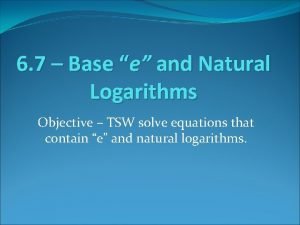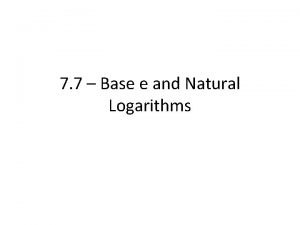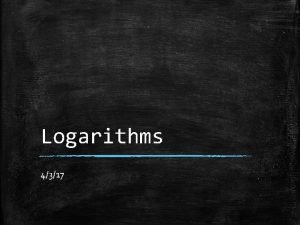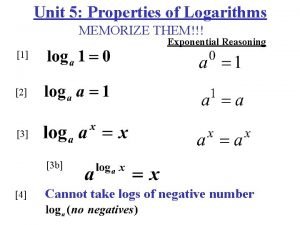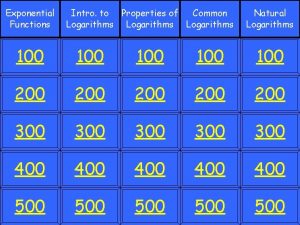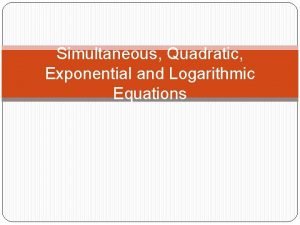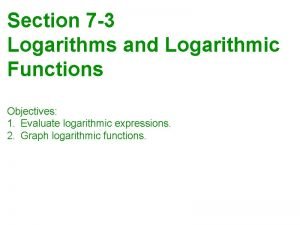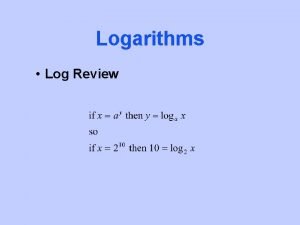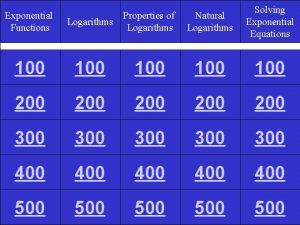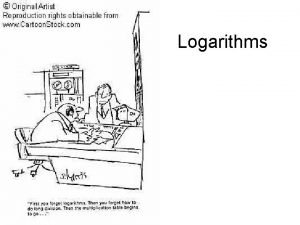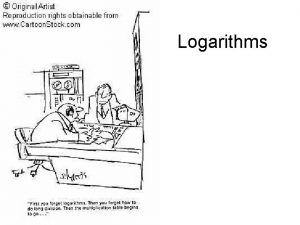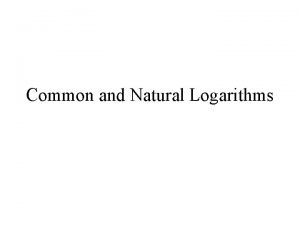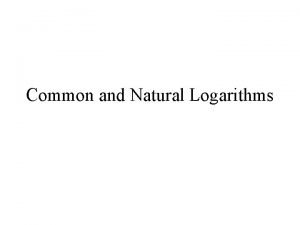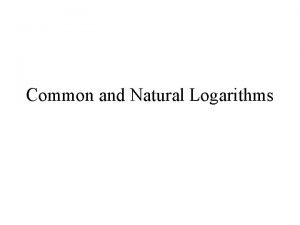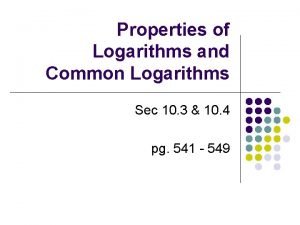Natural Logarithms l u o ty n r









- Slides: 9

Natural Logarithms. ’l u o ty n r a l le a h W To evaluate and simplify natural logarithmic expressions. To solve equations using natural logarithms. y Vo r a l u cab Natural logarithmic function

Take a note: The function has in inverse, the natural logarithmic function, The natural log uses e as its base What is e? The number e is an important mathematical constant, approximately equal to 2. 71828, that is the base of the natural logarithms. It is the limit of (1 + 1/n)n as n becomes large, an expression that arises in the study of compound interest, and can also be calculated as the sum of the infinite series. The properties that you learn in 7. 4 apply to logarithms with any base.

Problem 1: Simplifying a Natural Logarithmic Expression. Power Property of log. Quotient Property of log Simplify Your turn Answer

Problem 2: Solving a Natural Logarithmic Equation. Rewrite in exponential form Find the square root each side Solve for x Use a calculator Your turn Answer

Problem 3: Solving an Exponential Equation. Subtract 2 from each side Divide each side by 4 Rewrite in log form Divide each side by 2 Use a calculator Check your answer

Your turn Answer

Problem 4: Using Natural Logarithms. A spacecraft can attain a stable orbit 300 km above Earth if it reaches a velocity of 7. 7 km/s. The formula for a rocker’s maximum velocity v in kilometers per second is. The booster rocket fires for t seconds and the velocity of the exhaust is c km/s. The ratio of the mass of the rocket filled with fuel to its mass has a mass without fuel is R. Suppose the rocket shown in the pic has a mass ratio of 25, a firing time of 100 s and en exhaust velocity of 2. 8 km/s. Can the spacecraft attain a stable orbit 300 km above the Earth? Answer 8. 0 is greater than 7. 7 needed so , the spacecraft can attain a stable orbit 300 km/s above the Earth

Your turn A booster rocket for a spacecraft has a mass ratio of about 15, an exhaust velocity of 2. 1 km/s, and a firing time of 30 s. Can the spacecraft achieve a stable orbit 300 km above the Earth? Answer No, the maximum velocity of 5. 4 km/s is less than 7. 7 km/s needed it for an stable orbit

Classwork odd Homework even From the TB pgs. 480 -481 Exercises 11 -51
